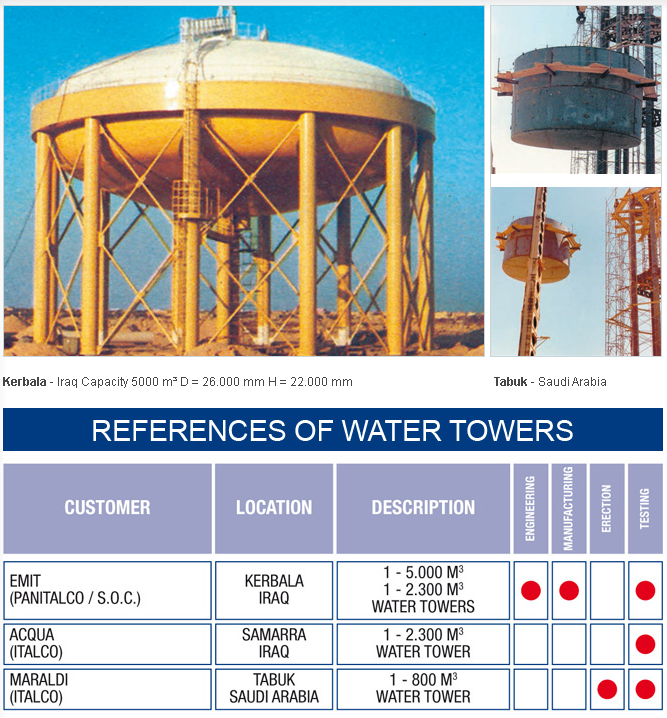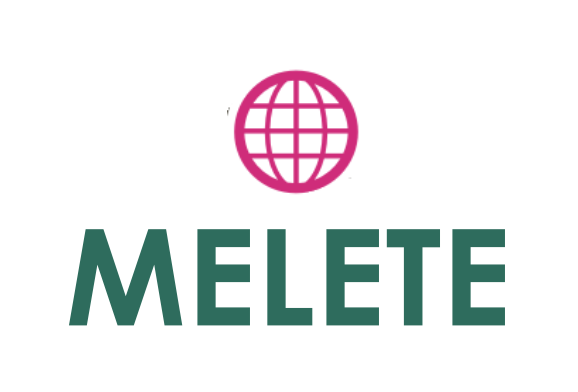Water Towers

Design and Construction of Cutting-Edge Water Towers: Intelligent Water Management
A fundamental yet often overlooked element of our water infrastructure: water towers.
They are no longer simple static structures, but complex and dynamic systems, capable of integrating the most modern technologies for efficient, safe and sustainable water management.
The Evolution of Water Towers: Not Just Storage
Traditionally, water towers were primarily designed to compensate for variations in demand and to ensure constant pressure in the distribution network. Their primary function was to store water during periods of low demand (for example, at night) and then release it during peak consumption.
Today, the concept has expanded. Modern water tanks are the heart of smart water management, playing crucial roles such as:
Pressure regulation: Essential for maintaining uniform and adequate pressure throughout the network, reducing losses and optimising delivery.
Strategic reserve: They provide a vital reserve of water in the event of supply disruptions or to respond to emergencies (e.g. fires).
Improved water quality: They contribute to maintaining water quality through circulation and reducing stagnation.
Monitoring and control points: They provide strategic locations for the installation of sensors and monitoring systems.
The Integration of the Most Modern Control and Management Systems
The real revolution in the design and construction of water tanks lies in the integration of advanced control and management systems. These systems transform tanks from simple containers to intelligent nodes within an interconnected water network.
Real-Time Monitoring
The application of intelligent sensors enables continuous monitoring of critical parameters, including:
Water Level: Accurate level sensors provide real-time data on the volume of water available.
Pressure: Digital pressure gauges constantly monitor the outlet and inlet pressure.
Water Quality: Multi-parameter sensors can detect turbidity, pH, residual chlorine, temperature and other quality indicators.
Flow Rate: Flow meters monitor the flow into and out of the tank.
Automation and Remote Control
With SCADA (Supervisory Control and Data Acquisition) systems and PLCs (Programmable Logic Controllers), a wide range of operations can be automated:
Pump Control: Pumps can be automatically activated or deactivated based on the desired water level and network needs.
Valve Management: Automatically open and close valves to regulate flows and pressures.
Alarms and notifications: The systems generate automatic alarms in case of anomalies (e.g. too low levels, pressure problems, alterations in water quality) and send notifications to the responsible personnel via SMS or email.
Remote diagnostics: The ability to access and diagnose the system remotely reduces intervention times and maintenance costs.
Data analysis and predictive maintenance
The data collected by the sensors is not only monitored, but is also analyzed to extract valuable information:
Trend analysis: Historical data analysis allows to identify consumption patterns, predict future demand and optimize resource management.
Predictive maintenance: By monitoring the performance of the equipment (pumps, valves), it is possible to predict failures before they occur, planning proactive maintenance interventions and reducing downtime.
Energy optimization: Intelligent systems can optimize the operation of the pumps to reduce energy consumption, activating them at times of lower energy costs.
Security and Resilience
Modern design also includes crucial aspects of security and resilience:
Physical security systems: Video surveillance, intrusion sensors and controlled access systems.
Cybersecurity: Protection of control systems from cyber attacks, essential to prevent disruptions or tampering.
Structural resilience: Design to withstand extreme events (earthquakes, adverse weather conditions), ensuring continuity of service.
Benefits of Intelligent Water Tank Management.
The adoption of these cutting-edge systems leads to tangible benefits:
Operational Efficiency: Reduction of management costs thanks to automation, energy optimization and predictive maintenance.
Service Reliability: Guarantee of a more stable and safe water supply, with constant pressure and better quality.
Loss Reduction: Constant monitoring and rapid identification of anomalies help reduce water losses in the network.
Environmental Sustainability: More efficient management of water and energy resources, contributing to a lower environmental impact.
Greater Security: Advanced protection against failures, attacks and tampering.
Conclusion
The design and construction of water tanks with the most modern control and management systems represents a fundamental step towards intelligent and sustainable management of water resources. It is no longer just civil engineering, but a complex integration of hydraulic, IT, electronic and mechanical engineering. Investing in these technologies means ensuring a safer and more resilient future for our water infrastructures.
